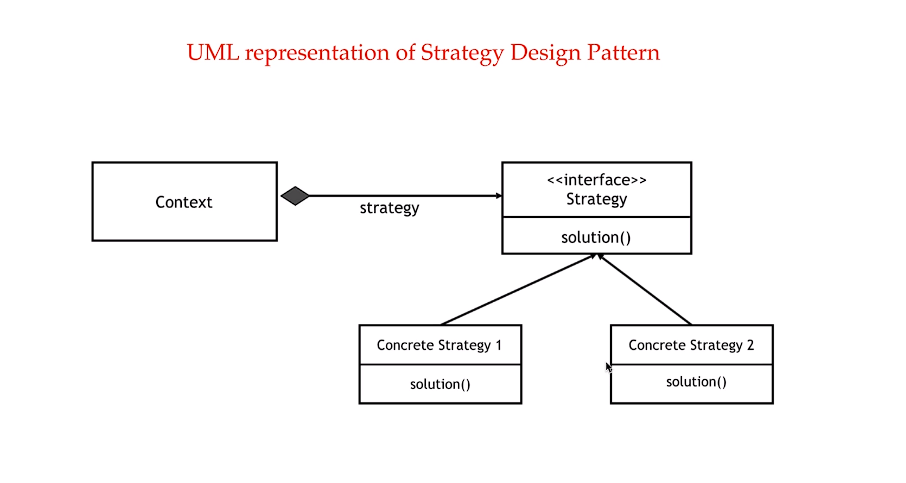Hello there, coding enthusiasts! Welcome back to our programming voyage. Today, we’re diving deep into the world of design patterns to uncover the brilliance of the Strategy Pattern in the realm of functional programming. Get ready to explore the dynamic world of strategies and how they can revolutionize your codebase.
Table of contents
Open Table of contents
Sections
Unveiling the Strategy Pattern
Ahoy! Behold the Strategy Pattern, a powerful behavioral pattern that comes to our rescue when we’re faced with the challenge of choosing from multiple algorithms or solutions for a particular task. What’s truly fascinating is that we, or our beloved client, can make a runtime decision on which implementation to employ.
Gone are the days of messy conditional statements cluttering our code! With the Strategy Pattern, we embrace elegance and flexibility. Imagine a scenario with various sorting techniques at your disposal, each like a paintbrush stroke on the canvas of code. The Strategy Pattern lets you seamlessly switch between these techniques, empowering you to craft the optimal approach for your specific needs.
The Strategy of Sorting: An Insightful Example
Consider a world where sorting algorithms reign supreme – quicksort, mergesort, and more. Enter the Strategy Pattern, acting as a maestro orchestrating the symphony of sorting. The power lies in your hands to dynamically choose the best sorting strategy at runtime, eliminating the need for static and rigid sorting methods.
Let’s embark on a voyage to explore a practical scenario in the realm of finance. Imagine you have a trove of stock data, each containing information about the stock symbol, current price, and units purchased. The challenge? Filtering this data based on various criteria. This is where the Strategy Pattern shines, guiding us through the sea of possibilities.
Understanding the UML Symphony
In the design pattern art gallery, we encounter the UML diagram, a masterpiece that visualizes the symphony of strategies. In this intricate canvas, strategies emerge as distinct sections – each encapsulated within its class. At the heart of it all is the “Context,” the conductor of strategies, deftly choosing the appropriate one based on the context. These strategies harmoniously implement a shared interface.
But here’s the twist: functional programming comes into play, transforming the landscape. Say farewell to an array of concrete classes! With the magic of lambdas, strategies can be conjured on the fly. This shift makes your codebase lighter and more agile, embodying the elegance of functional style.

An Odyssey in Filtering: Bringing Strategy to Life
It’s time to set sail on a coding expedition! Imagine you’re the master of stocks, navigating through a sea of purchase transactions. You wish to filter this data based on specific criteria. Enter “StockFilters,” your trusty sidekick. Armed with filtering strategies, this companion is ready to tackle any challenge. Whether you’re filtering by stock symbol or price, StockFilters has your back.
public static List<Stock> bySymbol(List<Stock> list, String symbol){
List<Stock> filteredData = new ArrayList<>();
for (Stock stock : list) {
if(stock.getSymbol().equals(symbol))
filteredData.add(stock);
}
return filteredData;
}
public static List<Stock> byPriceAbove(List<Stock> list, double price){
List<Stock> filteredData = new ArrayList<>();
for (Stock stock : list) {
if(stock.getPrice() > price) {
filteredData.add(stock);
}
}
return filteredData;
}But the true marvel emerges with the power of lambdas. With a mere lambda expression, you can specify filtering strategies dynamically, elevating your coding to a new level of clarity and efficiency.
public static List<Stock> filter(List<Stock> list, Predicate<Stock> p){
List<Stock> filteredData = new ArrayList<>();
for (Stock stock : list) {
if(p.test(stock))
filteredData.add(stock);
}
return filteredData;
}Empowering Flexibility: The Functional Approach
As we venture further, we uncover a treasure trove of code. StockFilters, once host to a plethora of filter-specific methods, transforms into a leaner, more agile entity. A single, dynamic function aptly named “filter” takes center stage. This function not only accepts the list to be filtered but also a predicate – a defining characteristic of your filtering strategy.
The magic unfolds as we unleash this function. Using lambdas, we dynamically craft strategies on the go. No longer bound by an assortment of methods, we find the true essence of the Strategy Pattern in functional form.
StockFilters.filter(stockList, stock -> stock.getSymbol().equals("AMZ")).forEach(System.out::println);Concluding Our Expedition
Dear coding pioneers, the Strategy Pattern opens doors to dynamic coding landscapes. No longer are we confined to rigid strategies – the world is our oyster, offering infinite flexibility. As we navigate functional programming waters, the Strategy Pattern remains a beacon of adaptable elegance.
Remember, in this journey, we’ve skimmed the surface of this pattern’s grandeur. In the realm of functional programming, the Strategy Pattern breathes new life into our codebase, a symphony of agility and power. Until we meet again on our coding odyssey, keep crafting, keep exploring, and keep pushing the boundaries of what’s possible. Farewell for now, and may your functional strategies lead you to programming greatness.
You can find the repo for this section of the course Here